Are you interested in developing a customized health app that could help people obtain their fitness and fitness dreams? You’re now not alone! As the demand for fitness and wellbeing apps keeps to grow, many entrepreneurs are considering getting into the fitness app marketplace. With Google Fit being one of the main apps in this area, you are probably questioning the value of developing a comparable platform that can revolutionize the fitness industry.
Fitness apps have become a crucial part of human’s lives, presenting a handy way to track bodily hobbies, screen heart charges, and even count energy. In truth, the worldwide Fitness App Market volume is predicted to reach US$33.04 billion by 2027, with revenue forecast to increase at a 14.34% CAGR from 2023 to 2027.
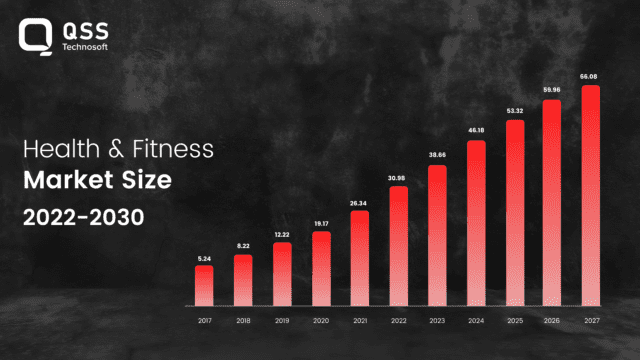
So, if you’re considering creating a health app like Google Fit, it’s crucial to understand the factors that can affect the price of development. From functions and functionalities to design and consumer experience, everything performs a role in determining the overall value.
Let’s explore these factors in more detail and provide you with a better understanding of what it takes to bring your fitness app idea to life. Make sure to read this blog till the end!
Read Our Page : Complete Guide to Mobile App Development in 2023
Understanding Fitness App Like Google Fit
Fitness apps like Google Fit have gained popularity for helping users track their physical activity, set fitness goals, and monitor their health data. These apps use a combination of sensors, algorithms, and data analysis to provide personalized insights and recommendations to users. Understanding the technical aspects behind these fitness apps can shed light on how they function and how they can benefit users in improving their fitness and overall well-being.
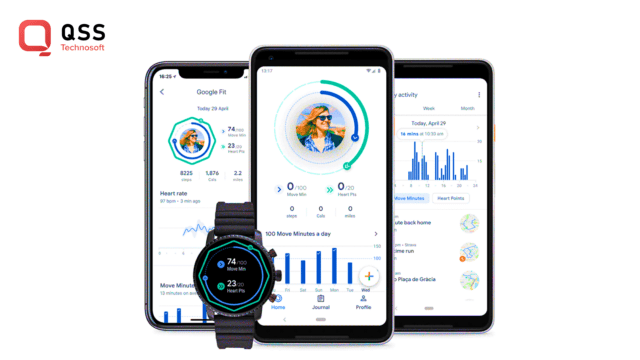
Example
One of the key components of fitness apps like Google Fit is the use of built-in smartphone sensors.
- These sensors include accelerometers, gyroscopes, and GPS receivers to gather data on the user’s movements and location.
- For example, the accelerometer measures the acceleration forces acting on the device, which can be used to determine the user’s step count, estimate the distance covered during a run, or track their cycling speed.
- The gyroscope, on the other hand, detects the device’s rotation and orientation, allowing the app to measure activities like cycling or weightlifting.
Benefits of Investing in Fitness App Like Google Fit
Investing in a fitness app like Google Fit not only offers personal health benefits but also presents a unique opportunity from an investment standpoint. Here are some key reasons why investing in a fitness app can be a profitable venture:
Market Growth Potential:
The global fitness app market is anticipated to continue its upward trajectory, driven by the rising demand for fitness solutions. With an increasing number of individuals adopting a healthier lifestyle and seeking convenient ways to track and improve their fitness, investing in a fitness app like Google Fit grants access to a market ripe with growth potential.
Example: Google Fit uses smartphone sensors, wearables, and IoT devices to accurately track user activities like steps, distance, heart rate, and sleep data. Advanced algorithms and machine learning are employed to analyze this data and provide personalized insights for users, encouraging continuous engagement with the app.
Diverse Revenue Streams:
Fitness apps like Google Fit generate revenue through various channels, such as premium subscriptions, in-app purchases, ad placements, and partnerships with fitness-related brands. These multiple revenue streams provide stability and opportunities for continued profitability.
Example: Through integrations with third-party fitness equipment manufacturers, Google Fit can offer users the ability to sync their workouts and data from devices like smart scales, heart rate monitors, and exercise machines. This creates opportunities for partnerships with companies in the fitness equipment industry and opens up potential revenue streams.
Established Brand Recognition:
As a part of the Google ecosystem, Google Fit benefits from the strong brand recognition and trust associated with the company. This established brand reputation not only attracts users but also facilitates potential collaborations and partnerships, opening doors for further revenue generation.
Example: Integration with other popular Google services like Google Maps and Google Calendar allows Google Fit to provide seamless and comprehensive fitness tracking solutions. Users can track their outdoor activities using GPS data from Google Maps or schedule and log workouts in Google Calendar, reinforcing the brand recognition and synergy within the Google ecosystem.
User Engagement and Retention:
Fitness apps thrive on user engagement and retention. Google Fit is designed to offer personalized features, challenges, and progress tracking, creating an immersive user experience. By continuously enhancing user engagement and retention rates through regular updates and improvements, Google Fit can establish a loyal user base, enhancing its position in the market.
Example: Google Fit utilizes gamification techniques to motivate users, such as achievement badges, personalized challenges, and competitions with friends. Additionally, the app can use social features and community platforms to enable users to connect, share achievements, and foster a sense of community and accountability.
Technological Advancements and Future Growth:
The rapid advancements in technology provide opportunities for fitness apps to expand their offerings. Integrating features like virtual coaching, artificial intelligence-driven workout recommendations, and compatibility with smart devices can significantly enhance the user experience and drive further growth. By embracing technological advancements and staying ahead of the curve, Google Fit can continue to attract users and investors alike.
Example: With the rise of AI capabilities, Google Fit can use machine learning algorithms to analyze user behavior, exercise patterns, and personal preferences to provide tailored workout plans, nutrition recommendations, and real-time feedback. This personalized approach enhances the user experience, leading to increased engagement and customer satisfaction.
Acquisition and Exit Potential:
Successful fitness apps often catch the attention of larger companies that seek to enhance their product portfolios. By investing in a fitness app like Google Fit, you position yourself for potential acquisition opportunities. This can result in a profitable exit strategy, offering a potentially substantial return on investment.
Example: The robust data collected by Google Fit, combined with Google’s expertise in data analysis and artificial intelligence, can be attractive to companies interested in utilizing this data for research, healthcare, or other commercial applications. This potential for data-driven innovations can increase the app’s acquisition potential and create lucrative opportunities for investors.
Read Our Page: How Much Does It Cost to Build a Fitness App Like Runkeeper?
Features of Google Fit App
The app uses various sensors and algorithms to provide accurate and real-time information to the users. Let’s take a closer look at some of the notable features of the Google Fit app.
1. Activity Tracking
Google Fit app tracks the user’s activity level throughout the day, including steps taken, calories burned, distance covered, and active minutes. It can automatically detect activities like walking, running, cycling, and swimming, providing detailed metrics for each activity.
Example: The Google Fit app utilizes the device’s accelerometer and gyroscope to measure the user’s motion and determine the type and intensity of an activity. It then uses machine learning algorithms to analyze the data and accurately classify the activity.
2. Heart Rate Monitoring
The app can monitor the user’s heart rate using the built-in heart rate sensors in supported devices or via compatible wearables. It provides real-time heart rate information during exercise sessions and rest periods.
Example: When a user engages in an exercise session, the Google Fit app continuously reads the heart rate data from the device’s sensors or connected wearables. It then processes and presents the heart rate information in a visual form, allowing the user to monitor their heart rate trends over time.
3. Sleep Tracking
Google Fit app offers sleep tracking functionality, allowing users to monitor their sleep patterns, duration, and quality. It provides insights into sleep stages, such as deep sleep, light sleep, and REM sleep.
Example: By using the device’s accelerometer and gyroscope, the app can detect the user’s movement during sleep. It analyzes the movement patterns to determine the sleep stages and duration, presenting the data in an easy-to-understand format.
4. Goal Setting and Monitoring
The app enables users to set personalized health and fitness goals and helps them track their progress along the way. Users can set goals for steps, calories, distance, and active minutes, and monitor their achievements.
Example: When a user sets a goal, the app calculates the target values based on the user’s historical data and recommendations from health guidelines. It continuously monitors the user’s progress and presents feedback to keep them motivated.
5. Data Visualization and Integration
Google Fit app provides a visually appealing and interactive interface for displaying the user’s health and fitness data. It can integrate with various third-party apps, wearables, and fitness trackers to seamlessly sync and consolidate data.
Example: The app uses data visualization techniques such as graphs, charts, and color-coded summaries to present health and fitness data in an easily understandable format. It provides APIs and SDKs to allow third-party app developers to integrate their applications with Google Fit, enabling data sharing and consolidation.
Read Our Page: How Much Does It Cost to Build a Fitness App Like Strava?
Total cost breakdown of building Similar app Google Fit App
Creating a comprehensive breakdown of the total cost for building an app similar to Google Fit involves considering various factors at different development stages. Please note that the figures provided are approximate and can vary based on factors like the complexity of features, development team rates, and geographical location.
Here’s a general breakdown for basic, intermediate, and advanced development stages:
Basic Level:
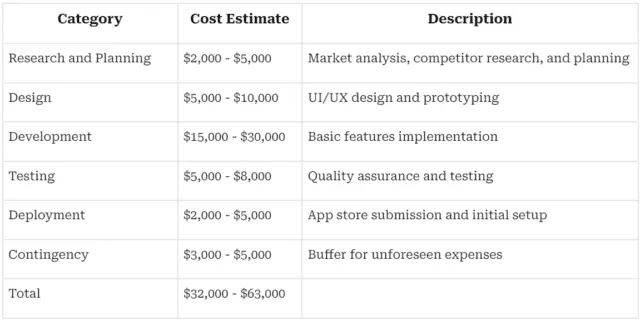
Intermediate Level:
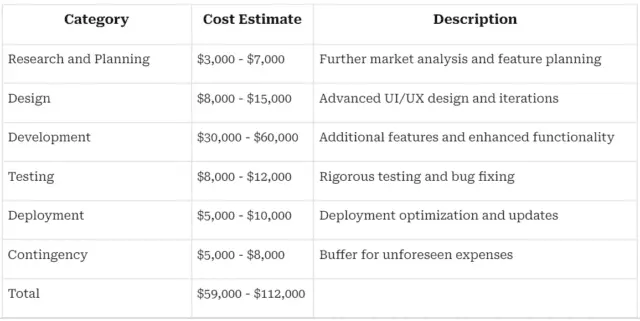
Advanced Level:
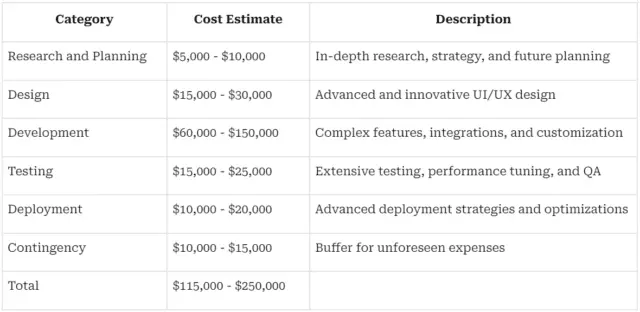
Note: These estimates are indicative and may vary based on your specific requirements, development approach, and the development team’s rates. It’s advisable to consult with the QSS Technosoft team to get a more accurate and personalized cost estimate for your project.
Conclusion
Building a fitness app similar to Google Fit requires careful planning and investment. The cost involved in developing such an app depends on various factors such as app features, complexity, design, and platform compatibility. While it is difficult to provide an exact figure, you can expect a significant investment.
If you are looking for an experienced and reliable app development partner, look no further than QSS Technosoft. Our expertise in developing fitness apps and our commitment to delivering high-quality solutions make them the ideal choice for your project.
Don’t miss out on the opportunity to create an innovative fitness app like Google Fit that can revolutionize the way people track their health and wellness. Contact QSS Technosoft today and take the first step towards building your own fitness app!
We are proud to mention that our work has been recognized by leading B2B reviews and research platforms like GoodFirms, Clutch, MirrorView, and many more.


How Much Does It Cost to Build a Fitness App Like Google Fit?